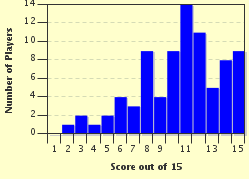Quiz Answer Key and Fun Facts
1. I'm going to start my journey around Asia in the "land of the rising sun". What's the currency I need to use in this island nation?
2. I have managed to get passage on a boat and am sailing across the Sea of Japan to South Korea. On arrival at the port, I found a bank and got some of the money used here. I can use this currency from South Korea if I were to travel to North Korea.
3. Heading south now, I arrived in Manila, the capital of the Philippines. What do the Philippine people call the money that they use?
4. Time to head for the airport again, and this time I'm flying to a country that has the largest Muslim/Moslem population in the world. It's easy to feel like a millionaire here as the money used is one of the world's lowest value currencies. What is the country and the currency?
5. I'm getting confused by all this Asian money, and want to go to a country that uses money I am more familiar with. My next destination uses the US dollar as its main currency. The country used to be part of Indonesia. Where have I traveled to?
6. Other territories in Asia also use a currency called the 'dollar'. In which city are dollars NOT the main currency used?
7. Oh dear, I'm back in a country where the currency has a low value. The largest banknote commonly available in this country is 500,000 dong. A popular filling noodle soup in this country is Pho, and there are a lot of people with the surname 'Nguyen'. Where have I traveled to now?
8. Visiting my last destination in South East Asia, a landlocked country where one can enjoy a cruise along the Mekong river, I'm starting to feel really sleepy. There is something about the name of the currency here that makes me think of a British English word for taking a nap. Major cities in this country include Vientiane and Luang Prabang. In which country have I arrived, and what's the name of the currency that has made me feel somnolent?
9. Back to the airport, and I am heading north, across China to Mongolia. Arriving at Ulan Bator airport, I go to change my money. What currency do I need to use in this country?
10. Moving on, I'm heading for a part of central Asia colloquially called the 'Stans'. My next destination, Kyrgyzstan, used to be part of the Soviet Union, only becoming a sovereign state with the collapse of the USSR in 1991. The currency here shares its name with that used in Uzbekistan, and has a similar name to the money used by Tajiks. What currency did I obtain upon arriving at the capital city's airport?
11. I've just arrived at Indira Gandhi International Airport and tomorrow I'm making a trip to Agra to see the Taj Mahal, before continuing on to the Pink City of Jaipur. What is the main currency used in this country?
12. I'm now heading to a very low lying country in South Asia that often bears the brunt of natural disasters. Once part of Pakistan, and using the Pakistani rupee as their currency at that time, the nation become independent in 1971. A densely populated country, the local people now use the taka as their currency. Where am I?
13. Arriving in Armenia's capital city of Yerevan, I approach the currency exchange counter, and see that the currency here reminds me of the word for a measure of Scotch or Irish whisky. What's the name of the currency that I will use here?
14. The dinar is the name of the currency in several countries in Western Asia. Which of these countries does NOT have the dinar as its legal tender?
15. I'm nearing the end of my Asian journey and am now in a country that is mostly in Asia but partly in Europe. The largest city of this country is split between the two continents, while in the Cappadocia region you can find fairy chimneys, stay in a cave hotel, and go hot-air ballooning. The famous World War I battle site of Gallipoli is also here. The name of the money used here reminds me of another currency that was once used in Italy. Which country is the last stop on my trip, and what is the name of its currency?
Source: Author
adeej
This quiz was reviewed by FunTrivia editor
stedman before going online.
Any errors found in FunTrivia content are routinely corrected through our feedback system.

